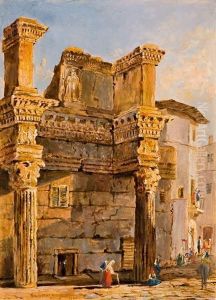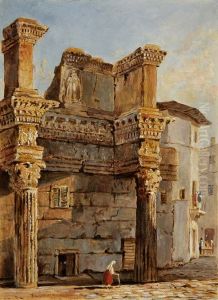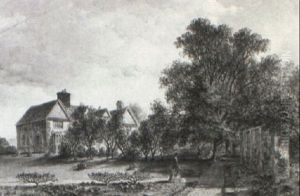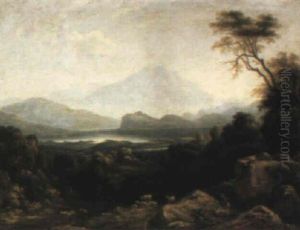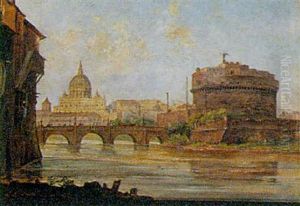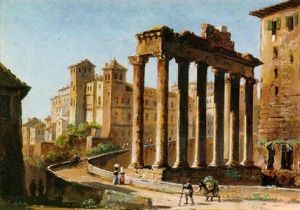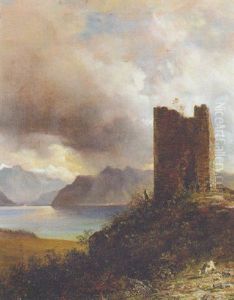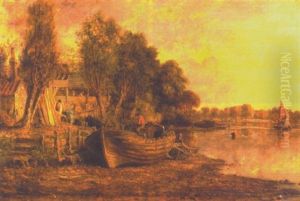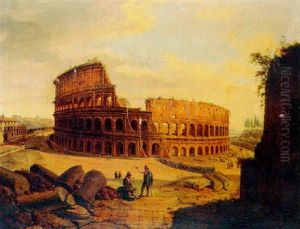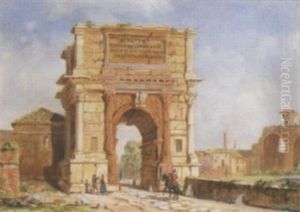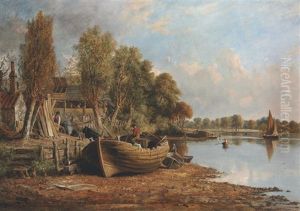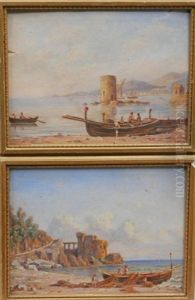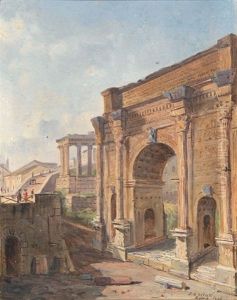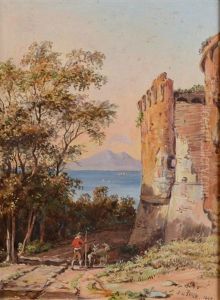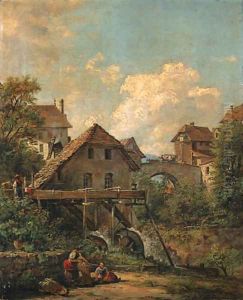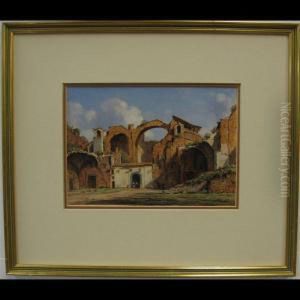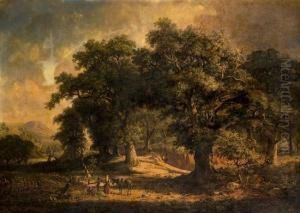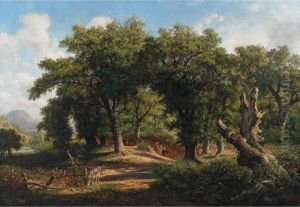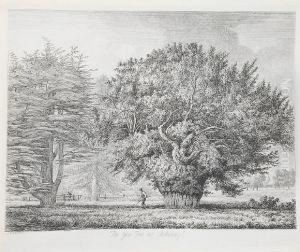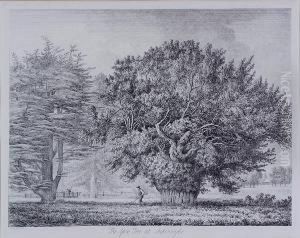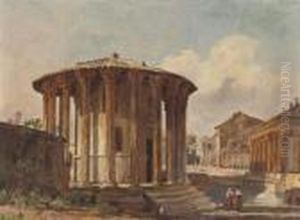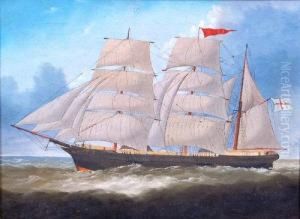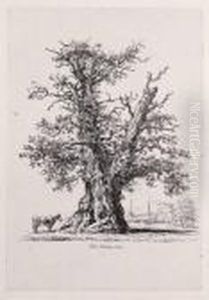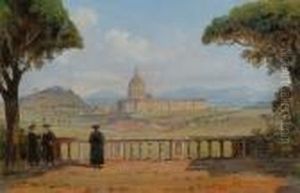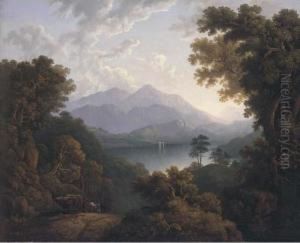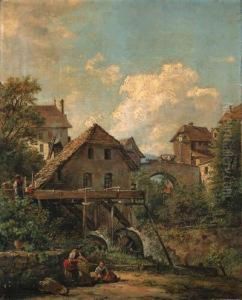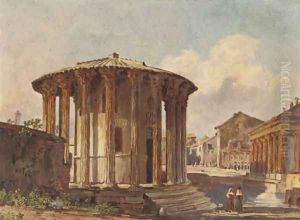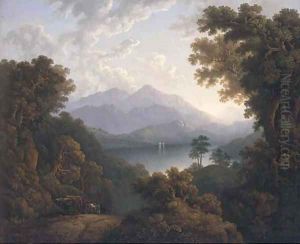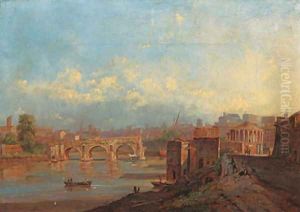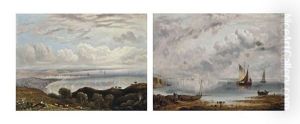Jacob George Strutt Paintings
Jacob George Strutt was an English artist, engraver, and writer, born in 1790. He hailed from a time when the appreciation for natural landscapes and the study of flora had begun to gain significant cultural and scientific interest in England. Strutt was particularly known for his remarkable skill in capturing the beauty and detail of trees and forests, a subject that fascinated him throughout his career.
Strutt's work often reflected his profound appreciation for the English countryside, and he dedicated much of his artistic endeavor to depicting ancient trees and forest scenes with a meticulous attention to detail. His fascination with trees was not just artistic; it also had a historical and cultural dimension, as he sought to document the oldest and most majestic specimens in Britain, recognizing them as living connections to the country's past.
In 1822, Strutt published 'Sylva Britannica et Scotica; or, Portraits of Forest Trees Distinguished for their Antiquity, Magnitude, or Beauty,' which is considered one of his most significant works. This publication showcased his talent not only as an artist but also as an engraver, featuring plates that he had painstakingly etched himself. Through 'Sylva Britannica,' Strutt aimed to highlight the importance and grandeur of Britain's trees, contributing to the early 19th-century discussions on conservation and the natural environment.
Beyond his contributions to botanical and landscape art, Jacob George Strutt was also recognized for his historical works. He exhibited a keen interest in the antiquities of England, which he explored through his drawings and writings. His book 'Deliciae Sylvarum,' or 'Rural Recreations,' and 'The Regal and Ecclesiastical Antiquities of England' contain illustrations that serve as valuable records of English heritage and landscapes during his time.
Jacob George Strutt's dedication to capturing the essence of England's natural and historical landscapes has left a lasting legacy. His works not only provide a visual feast for those who appreciate the beauty of the natural world but also serve as important historical documents that offer insights into England's environmental and architectural heritage during the early 19th century. Strutt passed away in 1864, leaving behind a body of work that continues to be appreciated for its artistic merit and historical significance.
